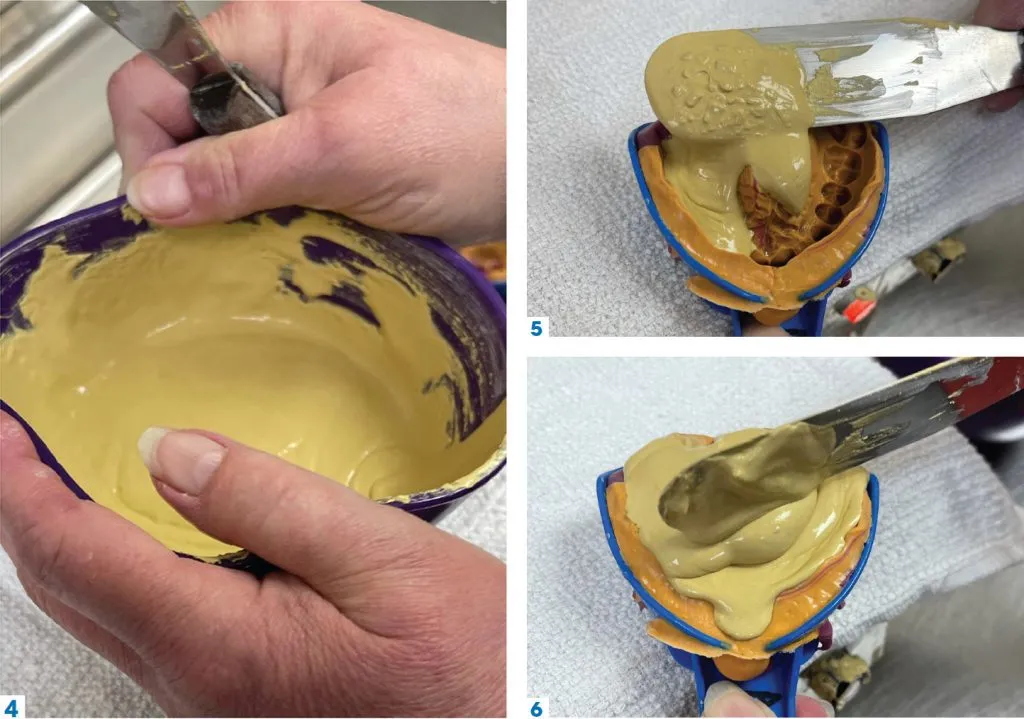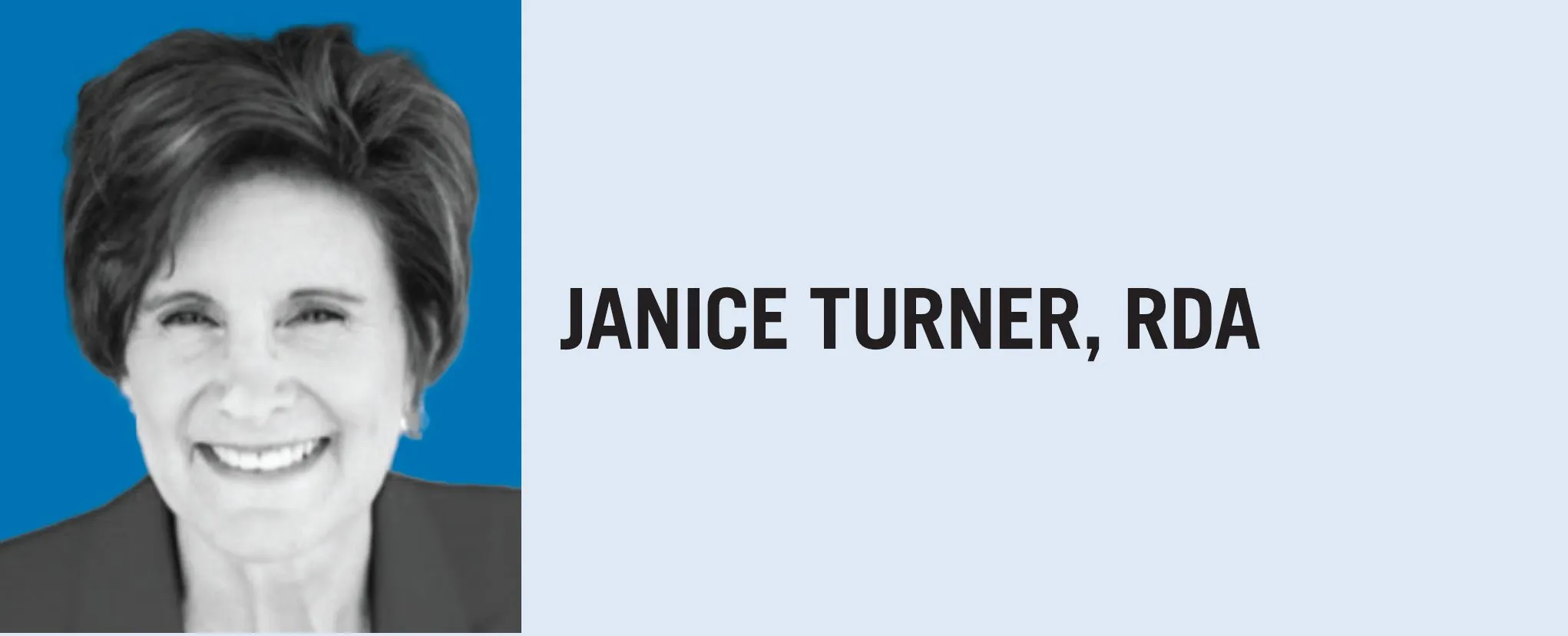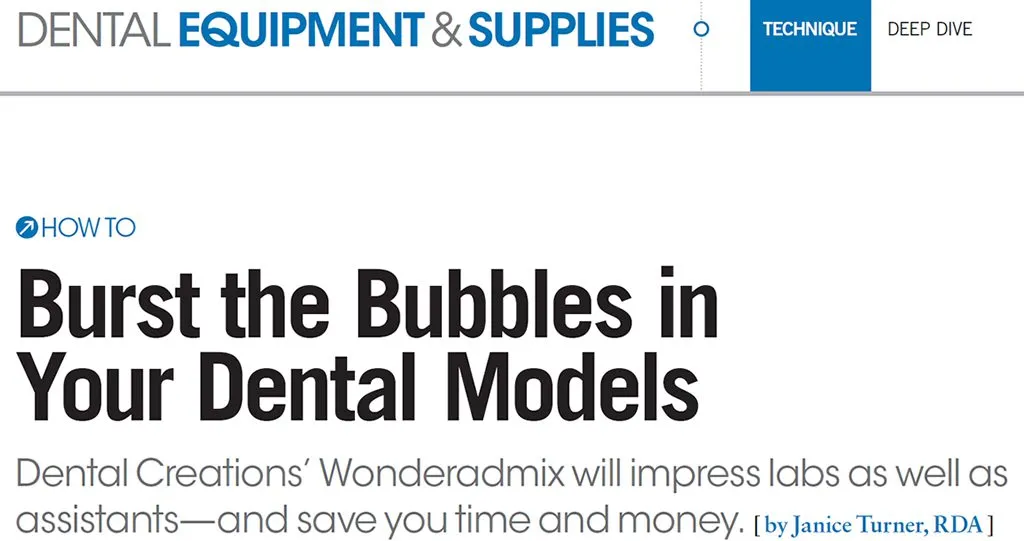WHAT IS ONE OF THE BIGGEST challenges dental assistants face? I would say it’s pouring bubble-free impressions. How many times have your staff poured models full of voids? Patients must then return for another impression, and there goes your chair time and product. Pouring accurate models is extremely important because inaccurate ones affect subsequent phases of a case.
Once an impression arrives at the lab, it will be sprayed with a debubblizer rinse or water prior to pouring because most assistants like me think that a slightly wet impression helps the stone flow through it better.
Mixing the stone is as important as taking a good impression, so water is added to the stone to achieve the right consistency. The assistant then places the impression on a vibrator and fills it slowly with stone to eliminate all bubbles (FIGURE 1). A great deal of time is spent on this. When the pour doesn’t go smoothly, the model may have voids, broken teeth, or chalky spots owing to oversaturation of the surfactant/debubblizer, or it may break as it is being separated from the impression.
When a lab receives a poor-quality model, it will either request a new impression or try to " x the mistakes. Despite its best efforts, if the appliance is ill-fitting, it will have to be remade. Remakes are costly and upsetting to patients. Although the lab is blamed for them, the problem begins in the dental office. If the lab is given an inaccurate model, it will not be able to perform a miracle. Valuable time will have been lost by the patient, the doctor, and the assistant.

A BETTER BITE
But it doesn’t have to be that way. I thought I was good at pouring models in the traditional manner until I started using Wonderadmix from Dental Creations. I was amazed at the difference it made. Wonderadmix is a concentrated, easy-to-pour debubblizer and hardener for all die stone, buff stone, and plaster, and it comes in a 3-gallon size (400 uses) and a 1.5-gallon size (200 uses). It eliminates the need for surfactants and creates smoother, stronger, and denser stones that have finer margins and are less likely to chip, fracture, shrink, or expand.
To use, I simply empty 1 syringe of Wonderadmix into the bottle provided (FIGURE 2), add the amount of water recommended by the stone manufacturer, and shake well. Once the impression is ready to pour, I place the stone in the mixing bowl, shake the Wonderadmix, and add it to the stone and combine. The mixture should never be runny; it should have a creamy consistency (FIGURE 3).
When the bowl is placed on a vibrator, fewer bubbles are visible in the mixture (FIGURE 4). I take the impression and slowly add the stone by letting it flow into the most distal surface (FIGURE 5). I pour it all the way around and continue adding less and less until the model is filled. I keep the stone moving through the anatomical depression from one side, through the anterior, and into the opposite side. Once the anatomical depression is filled, I start adding larger increments to fill the impression (FIGURE 6).
It really is time to try Wonderadmix. Your assistants and labs will love the models, and you will save time and money. Best of all, an accurate cast makes for an excellent-fitting appliance, a better bite, happier patient, and a popular dentist.


About the Author: Janice Turner is a registered dental assistant who has worked at a teaching facility at the Las Vegas Institution and as a trainer for Contemporary Products Solutions for Invisalign. She has a degree in social science from Texas State Technical Institute in Waco, Texas.


